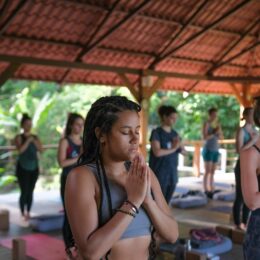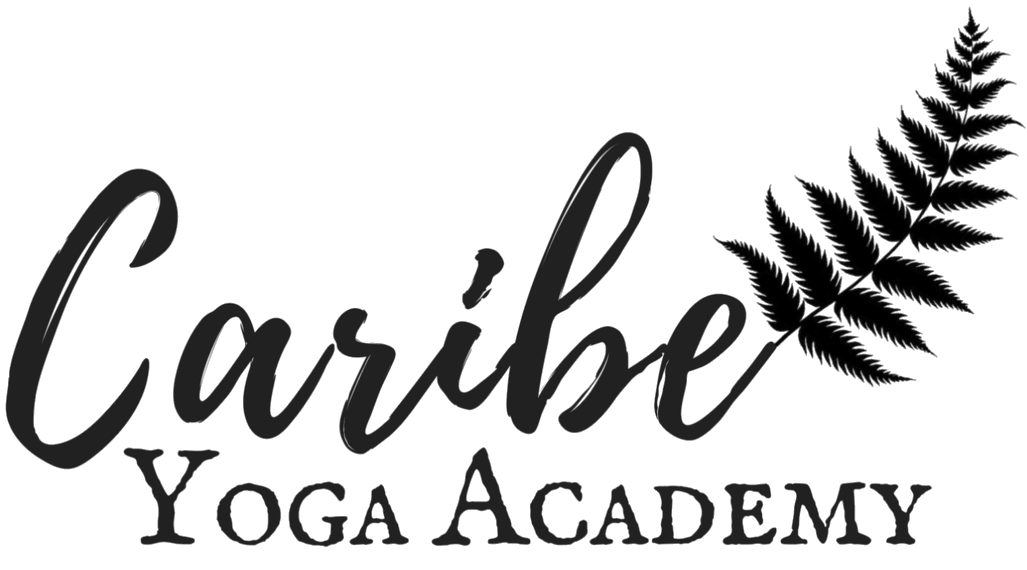Welcome to an introduction to the five elements of Ayurveda. Ayurveda or the “science of life” is a principal that is woven into both the teacher training courses at Caribe Yoga Academy and the menu at AmaSer Vegan Café and Eatery. The Indian classical medicine, which dates back more than 6,000 years, is the inspiration behind AmaSer’s vegan and gluten free menu. Ayurveda’s main goal is to promote good health, through a balance between mind, body, and spirit.
The Hindu philosophy recognizes five basic elements found in the universe as the fundamental building blocks of nature, and understands that all things in nature and every person is made up of these five elements. They are:
- Ether (Space)
- Air
- Fire
- Water
- Earth
As mentioned, the Ayurvedic philosophy is based on finding harmony and balance between these five elements. When these elements are out of harmony, it can negatively impact your mental and physical health. Each person will have a predisposition towards one specific element, with every individual’s balance of the elements being unique, and this principal element will be the most vulnerable to imbalance.


Ayurveda and Yoga
Yoga and Ayurveda are linked as practitioners of Ayurveda believe physical symptoms of disease are preceded by an emotional response. The main focus is to look at root causes over treating symptoms. Symptoms can be addressed with methods such as yoga practices, breath practices, exercises, bodywork treatments, diet, etc. With these methods, Ayurveda helps us to balance our inner and outer elements to create harmony.
Keep reading for a synopsis of each of the five elements and yoga poses and practices that can help to build each element (source for yoga poses: Nadi Girl Ayurveda).
Ether (Akasha)
The formless form. Ether is the space element and is so subtle that it cannot be seen, heard, or felt. It is the synergy of all the elements.
Yoga poses and practices to build the ether element:
- Meditate, chant or connect to ancestors or tradition of origin
- Kumbacha – breath retention
- Stillness in practice
- Focus on the space between the poses
- The ultimate savasana
Air (Vayu)
Air is existence without form, Ether in movement. A gaseous matter moved by wind.
Yoga poses and practices to build the air element:
- Alignment of the breath with movement
- Thoracic backbends (cobra, camel)
- Chest openers
- Pranayma practices
- Inhale focused breath
Fire (Agni)
Fire is form without substance, the element of transformation.
Yoga poses and practices to build the fire element:
- Sun salutations
- Standing poses
- Balancing poses
- Kriyas
- Kapalabhati breath to build fire
Water (Jala)
Water is liquid matter, substance without stability. It’s heavier than the previous elements.
Yoga poses and practices to build the water element:
- Flowing through the movement of poses and breath
- Transitions between poses
- Spinal undulations
- Circular movements
- Less alignment
Earth (Prithvi)
Earth is the heaviest and densest element. It’s what you can touch, taste, feel, and perceive with your five senses.
Yoga poses and practices to build the earth element:
- Forward bends
- Grounding poses
- Poses with the body to the ground
- Standing poses (like warriors)
- Longer holds
Ayurveda at Caribe Yoga Academy
At Caribe Yoga Academy, the 300 Level Program is intended for those who wish to deepen their knowledge of Yoga and Ayurveda, the sister sciences that explore the prospect of wholeness and good health for a higher quality of living, and a longer life. On completion of the course, you will have the confidence to begin integrating Ayurveda into your yoga lesson plans and everyday life.
The curriculum for 300 Level Programming includes the following electives: Ayurveda & Lifestyle; The Ayurvedic Kitchen; Ayurvedic Medicine and Routines. Check out the next available dates for our 300 Level Program here.
If you are interested in an introduction to Ayurveda check out AmaSer’s online course here. This online, on demand, course covers the following:
- Deepen your understanding of Yoga’s rich history and its benefits as interwoven with Ayurvedic medicine.
- Receive an introduction to Ayurvedic philosophy to guide you on AND off of the mat.
- Explore anatomy through the lens of Ayurveda.
- Get 9 full length practices (three for pacifying each dosha).
- Dive into Mantra that is specific for supporting Ayurveda study.
- Receive useful and accessible recipes to sustain and restore balance.
- Tools for understanding and supporting your digestion, daily and seasonal routines, your mind, your overall elemental balance
- and so much more!

Recent Comments